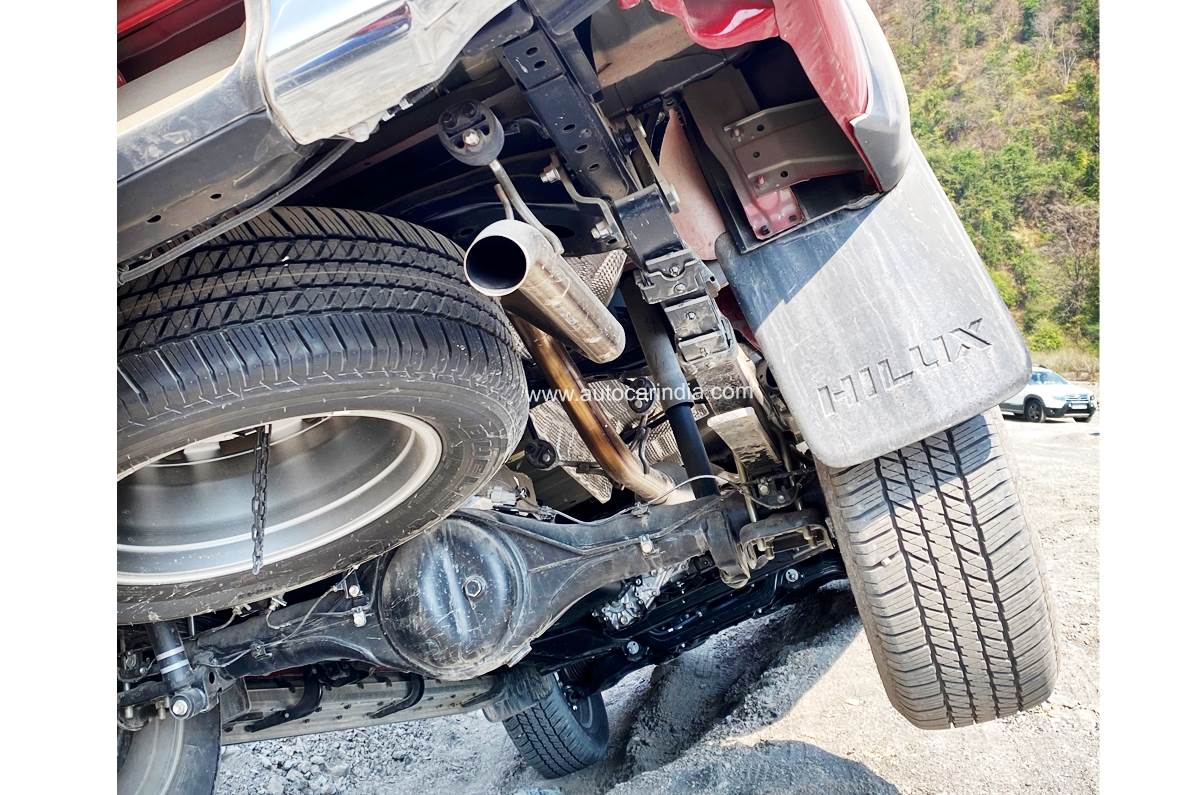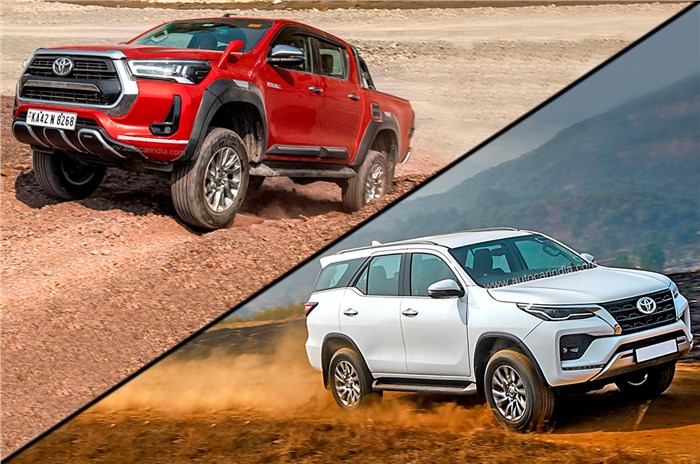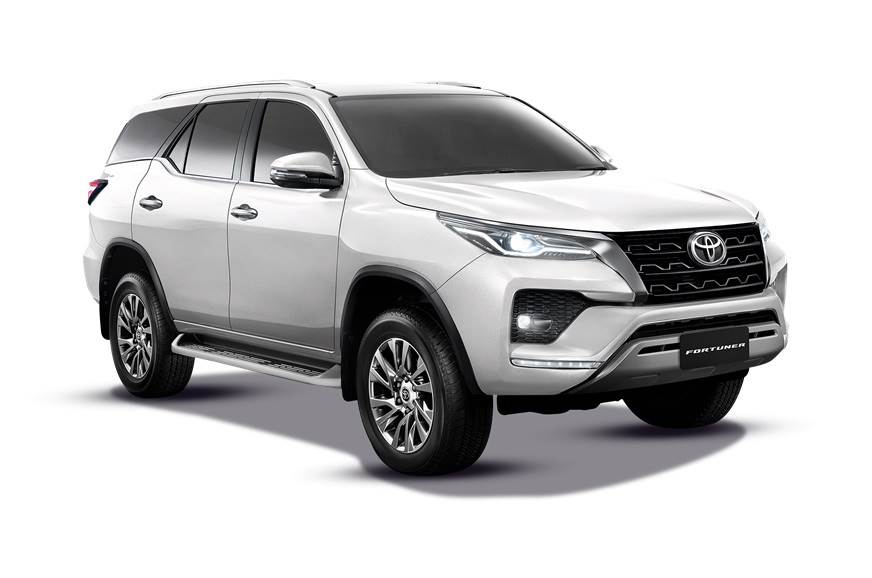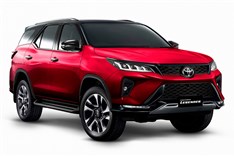The Toyota Hilux and Fortuner are both based on the manufacturer's IMV platform. While the SUV and pickup share many similar aggregates – with many large assemblies being interchangeable – there are many differences that make these outwardly similar vehicles quite different under the skin. Listed below are five key tech differences between the Hilux and the Fortuner.
Toyota Hilux has a tougher chassis

The Hilux and Fortuner are built around what is fundamentally the same super tough chassis, but the one used by the Hilux is even more robust. This is both by necessity and by design. This is a load bearing truck to begin with and Toyota engineers say they have made the chassis "tougher than we can imagine," making sure they exceeded even their own expectations of how tough it should be. So not only are superior metals used in specific high stress areas, the chassis also differs physically. The main longitudinal rails or longerons are larger and wider, the rear section that supports the loading bay is built more robustly and for added torsional stiffness, the chassis also gets more stout cross members.
Toyota Hilux is longer with longer wheelbase

While the Fortuner and Hilux are very similar up until the front door, the Hilux is substantially longer in beam. While the already large Fortuner is roughly 4.8 metres long, the Hilux is even longer at 5.3 metres, making it among the longest ‘cars’ on our roads. This, of course, also includes a much longer 3,085mm wheelbase, which is significantly longer than the Fortuner's 2,745mm. This is needed for the loading bay and its 470kg load capacity. While the longer wheelbase is good for space and load, it does affect the agility of the truck, especially the ease with which it can take U-turns. And the ramp over and departure angle are also different from the Fortuner when it comes to offroading.
Toyota Hilux uses a leaf spring rear suspension

While the Fortuner uses a coil spring rear suspension, the Hilux, being a load carrying truck, uses more suitable leaf springs. This fundamentally changes how the Hilux rides and drives, especially when it is empty. Still, leaf springs are better for heavy loads and are more suitable and stronger when it comes to overloading. Having a leaf sprung rear is also advantageous if you are going offroad. Here, the ‘live’ rear axle and leaf-sprung suspension combo allow for better axle articulation, and hence, better traction during more demanding angles. So, while the longer wheelbase doesn’t help much off-road, traction and wheel articulation are actually superior on the pickup.
Toyota Hilux has drum brakes at the rear

Another way the Hi-Lux differs from the Fortuner is that it gets drum brakes at the rear. This comes as something of a surprise as drum brakes are considered old tech. They are, however, still used in trucks, where the additional loads make them suitable. There are several reasons for this and not just one overriding reason. For one, drum brakes can be made to deliver a greater braking force for a given diameter even when compared to discs. This is important when you consider the much higher load pickups have to contend with at the rear and the impact on price a considerably larger disc would have. Drum brakes are also hardier in dealing with static loads when the truck is stationary, and are more mechanically robust and longer lasting.
Toyota Hilux is tuned differently

The Hilux is also tuned differently from the Fortuner. While one is primarily a comfort-oriented SUV, the other is a lifestyle pickup. So it's not just the hardware, even targets and objectives differ. This is also why the Hilux has a gearbox that is differently setup. The manner in which the engine delivers power is altered and how the power flows to the transmission and to the wheels via driveshafts is also altered.
Also See:
Toyota Hilux off-road video review









Comments
Member Login
Personal Details
No comments yet. Be the first to comment.